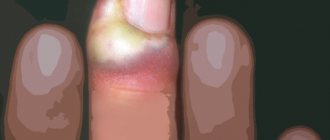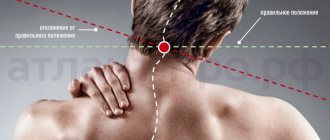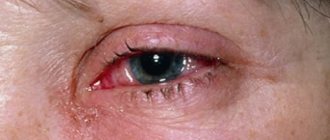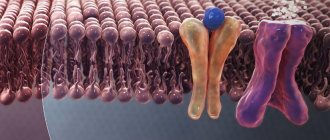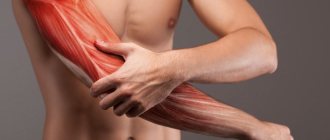Free consultation with a doctor by phone
Surgeon appointments are available daily by appointment!!!
LLC "Your Doctor"
Chat with the doctor
Addresses of medical centers in Moscow (unified reference) +7 (495) 255-45-59
Make an appointment at the clinic Discount on services Promotions
- +7 (495) 255-45-59
- Surgical centers in Moscow
- Every day from 9.00 to 20.00
- call me back
You can make an appointment with our operators by calling +7 (495) 255-45-59
Prices for services Clinic address Make an appointment Call a surgeon to your home Pediatric surgeon Ligation
An abscess after an injection can occur in anyone who has undergone this unpleasant procedure at least once in their life. If intramuscular injection is performed correctly, the risk of developing an abscess is minimal. However, there are situations when a lump may appear at the injection site, which does not dissolve for a long time.
In the worst case, the injection site may become red and inflamed, and pus begins to accumulate in this area, which is surrounded by a capsule. In this case, you should not delay contacting a doctor.
Useful information on the topic:
- Abscess treatment
- Opening an abscess
- Purulent abscess
- Abscess of the buttocks
- Abscess removal
- Abscess in pregnant women
- Bartholin gland abscess
- Abscess in a child
- Finger abscess
- Abscess puncture
- Skin abscess
- Causes of abscess
Treatment of phlegmon
Treatment of phlegmon is surgical - opening the abscess, excision of necrotic tissue (see photo below).
In the photo, the phlegmon is opened, the Achilles tendon is visible at the bottom of the wound.
After opening the abscess, the wound is cleaned, inflammation subsides, and wound healing processes begin.
In the photo, the wound has cleared and is beginning to heal.
In the complex treatment of phlegmon, antibiotics, immunocorrectors, physiotherapy, etc. are also used.
The photo below shows phlegmon of the left forearm, which developed from a boil.
In the photo below, the same phlegmon is opened, the wound is cleaned.
The photo below shows the same wound, almost healed.
The wound has healed.
The photo below shows advanced phlegmon of the thigh. The duration of the disease is 2 weeks.
The patient refused hospitalization, so treatment of phlegmon had to be carried out in a clinic. In the photo below - the same phlegmon 7 days after the operation - the wound has cleared and is granulating.
After cleaning the wound, secondary sutures were applied (photo below).
Diagnostics
The diagnosis is made when a patient comes to the doctor with complaints. History helps in accurate diagnosis. But the doctor may prescribe the following studies:
- general blood analysis
- OA urine
- blood biochemistry
- culture of infiltrate for microflora
If the complication is chronic, then ultrasound diagnostics is done in order to understand how far the inflammation has spread. In the most advanced situations, a CT or MRI will be prescribed.
Abscess
Unlike phlegmon, an abscess is an accumulation of pus separated from other tissues. In essence, an abscess is a localized phlegmon.
In the photo - in the upper outer quadrant of the left gluteal region - there is a painful swelling with redness of the skin. 10 days ago, injections were given in this place - post-injection abscess of the left gluteal region.
In the photo above, against the background of existing callus, pain, redness of the skin, swelling arose, the epidermis was partially exfoliated with pus - a subcallosal abscess.
Prevention
After an abscess of the muscle layer (even if the person is cured in time), a scar remains on the skin. Since there was deformation of the fat layer, a dimple remains in that place. Therefore, it is important to follow the rules of prevention. It is important to administer medications correctly, taking into account the frequency, speed and dosage of drug administration. You also need to know whether the medications that are taken into the same syringe are compatible.
When an injection is given, the needle must reach the muscle, passing through the fat. In order for the drug to be absorbed well, you need to lightly massage the area where it was injected. And it is important to do this with a disinfected cotton swab and not with dirty hands. If you need to give several injections (on one day and on subsequent days), try not to fall into the same area, deviate at least a couple of mm.
Follow the rules of asepsis and antiseptics. Before giving the injection, the hands of the person giving it should be thoroughly washed and wiped with a disinfectant. Before and after the injection, the area should be treated with an antiseptic. Syringes and other consumables should be disposable, this greatly reduces the risk of infection.
It is necessary to correctly determine the points where the drug can be administered. It is difficult to give injections to patients with a high body mass index. It is difficult for them to get a needle through the fat to the muscle. In this case, the injection should be given where there is less fat.
Atheroma
A type of abscess - suppurating atheroma - video of an operation to open an abscess
At the stage of abscess formation, there is still the possibility of conservative treatment (antibiotics, physiotherapy, semi-alcohol dressings), which often results in cure. If a cavity with pus has formed, the only treatment is surgery. Under anesthesia or local anesthesia, the abscess is opened, pus flows out, after which the dead tissue is excised as completely as possible, the wound is washed and drained. After the operation, dressings are required (daily or every other day). The wound healing period is 10 - 20 days (depending on the size, depth and other factors. With extensive phlegmon, skin grafting may be required.
How to get rid of pain when an abscess occurs and diagnose it
If signs of an abscess are detected, the first step is to seek medical help. The initial stage is diagnosis of the complication. To do this, you need to pass the following tests:
- blood analysis;
- Analysis of urine;
- bacteriological cultures;
- culture for microflora;
- ultrasound examination (for chronic pathology).
If there are obvious complications, an additional tomography may be prescribed by the doctor's decision. When examining a patient, the specialist is obliged to check the lymph nodes that are in close proximity to the site of inflammation. Their increased size is considered normal, but they should not be painful. If pain occurs, there is a possibility of lymphadenitis - a complication that indicates the spread of infection throughout the body.
Treatment and prevention of complications with abscess
Self-medication is strictly not recommended. Any inflammation is considered dangerous to human health, and when treating an abscess it is necessary to consult a doctor. In most cases, conservative treatment is used without complications. The initial step before contacting a medical facility is the application of cold compresses, which should affect the resorption of the purulent seal.
If this method does not bring improvement, but the condition of the wound does not worsen, cold compresses are replaced with warm ones (a heating pad). Since infection is caused by various bacteria, any doctor is required to prescribe antibacterial drugs to the patient. In case of complications or a large volume of affected skin, surgical intervention with opening of the wound is used.
Antibacterial agents can be tablets, ointments or injections. In order to prescribe medication, test cultures of the purulent abscess mass must be taken. Based on the results obtained and taking into account the individual perception of the components of the drug, the attending physician prescribes a comprehensive treatment for the patient.
The advantage of using an ointment is that it has an effect only in the area of inflammation and does not enter the bloodstream. It is worth noting that if you have diabetes, it is necessary to take additional medications that will regulate the metabolism in the body.
For injections, the best option would be to call a nurse, having previously specified the cost of injections at home. You should not try to give injections yourself; it is better to entrust your health to a medical professional who has experience in administering injections. Topical medications can also help treat abscesses. Any anti-inflammatory ointments will eventually relieve swelling and stop the process of infection of healthy tissue.
How common is rectal fistula?
The incidence in European countries is about 10-25 people per 100 thousand population. Mostly people of working age suffer from rectal fistulas. Men get sick 2-3 times more often than women.
Important! This disease, being benign, can dramatically reduce a person’s quality of life. A serious and most common complication of inadequate treatment of perianal fistulas is impaired holding function due to damage to the muscular apparatus of the anal canal.
Anatomy of the rectum and perianal region, functions of the obturator apparatus
The rectum and anal canal are the final sections of the digestive tract. The immediate tasks of the rectum are the accumulation, formation and excretion of intestinal contents and gases. The functions of the anal canal are unique: a system of nervous reflexes and a complex muscle complex provide one of the most important functions of the body - control of bowel movements, as well as differentiation of the composition of intestinal contents without the need for conscious assessment and subsequent “smart” control of evacuation. In other words, a healthy person most of the time does not think about what kind of contents are in the rectum, whether it is necessary and whether it is possible to retain it in a given situation. All this is controlled unconsciously, thanks to multi-level neuromuscular self-regulation of the holding process.
The approximate boundary between the rectum and the anal canal on the side of the mucous membrane (lumen) of the intestine is formed by the so-called dentate line. There are vertical folds on it, alternating with depressions - crypts. The ducts of the anal glands open into the crypts. The mucus produced by these glands facilitates the sliding of intestinal contents as they pass through the anal canal. Circumstances such as trauma, swelling of the mucous membrane due to defecation disorders, chronic intestinal diseases can lead to inflammatory changes in the crypts and anal glands.
Outside the mucous membrane there is a complex of muscles - these are the sphincter muscles mentioned above, which provide the function of retention and excretion. There are internal and external sphincters. The internal sphincter forms the so-called resting tone, uninterruptedly ensuring the tightness of the anal canal. Its regulation and reduction occur unconsciously, that is, without our will. The external sphincter surrounds the internal one and consists of several layers (portions). Its reduction occurs due to our volitional effort (Fig. 1).
Figure 1. Schematic representation of the rectal sphincters
Consequences and complications
In the case of an unfavorable course of the process, widespread tissue necrosis may develop, which can also affect the subcutaneous tissue, and can also become infected and lead to the formation of subcutaneous phlegmon or a large wound surface. After healing, rough keloid scars may remain and may ulcerate.
Complications of intramuscular injections can lead to irreversible nerve damage, reversible sensory disorders (due to impaired innervation), aseptic muscle necrosis and various specific adverse reactions of the drug, for example, allergic ones.
Penetration of infection into the bloodstream can lead to sepsis, pericarditis , osteomyelitis , and disseminated intravascular coagulation syndrome .
